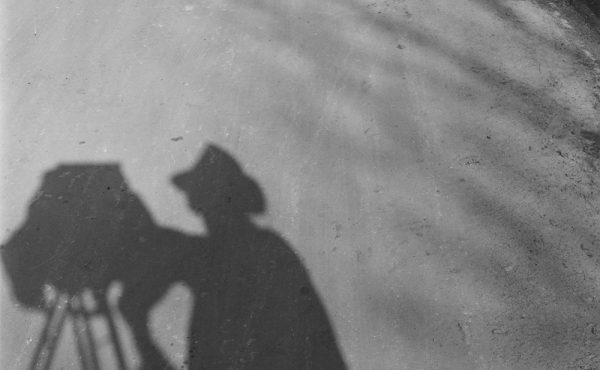
The 1998 creation of the “megacity”, a merger of all of metro Toronto’s cities and boroughs, was the last in a long line of annexations. Places like Forest Hill, Swansea and Parkdale were once independent towns with their own municipal buildings and councils.
I was perusing the book Parkdale In Pictures: Its Development To 1889 by Margaret Laycock and Barbara Myrvold and published by the Toronto Public Library, when I stumbled across the former town’s coat of arms (Parkdale existed only as an incorporated village/town for 10 years from 1879 to 1889). Unlike other Canadian coat of arms (and even Toronto’s) — which usually depict beavers, bears, lions, griffins, etc — the Parkdale version was much more humble and personal.
The town seal reflected the occupations of the first elected members of the village council. It was made up of five representatives: one reeve and four councillors for each of the wards (St. Vincent’s, St. Martin’s, St. Mark’s, and St. Alban’s). John Gray Jr., elected as Parkdale’s first reeve, was a nurseryman, so he was represented by the maple tree near the top; the scales of justice symbolized the barrister James B. Davis; a book for bookseller Charles Frankish; a bull’s head for butcher Joseph Norwich; and a quill for the local bookkeeper Udney A. Walker.
And just like the massive opposition to the 1998 megacity creation, the annexation of Parkdale created a lot of debate. After the votes were cast on October 27, 1888, the pro-annexationists won. Laycock and Myrvold described the the hours and days that followed: “A victory parade of about 100 annexationists carrying torches or lit brooms was led by the Toronto Bold and Iron Works band. The public arguments continued for days while accusations of cheating spread… Ex-Reeve Hugh McMath even launched an unsuccessful lawsuit to quash the vote….” An editorial cartoon in the local paper The Grip captured the mood of residents (see larger version).
– – – – – – – –
EDITOR’S NOTE: Cross-posted from ERA Architects’ office blog where Spacing publisher Matthew Blackett is researching local history.




12 comments
Great post. I also have this book out right now and i’m finding so many interesting things about Parkdale’s history(*Roncesvalles was named after a spanish war, the reason why there’s no continuous roads crossing QueenWest, Sunnyside’s Amusement Park, North Parkdale Train station..ect)
But I’m wondering though why we don’t make more coat-of-arms or seals anymore. Or at least i don’t see them myself. They mark significant places or time in our lives which i think should be remembered. History shouldn’t be forgoten.
Besides, they look pretty damn important! I love soccer team emblems aswell because they shout out “history”, “pride” and “unity”.
Well done Matt.
Intriguing!
What is “the reason why there’s no continuous roads crossing QueenWest”?
“the reason why there’s no continuous roads crossing QueenWest”
Please, do tell. What’s the reason?
Yorkville is another former village whose coat of arms reflects its founders. A post for another day, perhaps?
Parkdalian >we should put that seal on hats and shirts for PD pride.
According to this book, T-intersections where made because land ownership didn’t straddle any thoroughfare at the time of initial sub-division. These corners were also liked by the community because it discouraged or deflected traffic coming from the side streets.
This makes complete sense. Whenever i do need to use my car to get out of town, i usually take King instead of Queen, to get to the Gardiner(via Jameson)
A little bit of coincidence and community agreement i suppose.
ScottD: Let’s make these hats and T’s happen! And would you need legal rights to use this seal?
I missed to add that earlier patterns of land ownership caused this T-intersections.
So in reality, people had no say on how these intersections were to be constructed, but it seems like it turned out for the good.
“A victory parade of about 100 annexationists carrying torches or lit brooms was led by the Toronto Bold and Iron Works band.”
I can’t even remember the last time we had a good old torch and lit broom parade. Ahhh, good times.
When I saw that seal, my first thought was “t-shirt” even before I read the comments.
With regards to the “T” intersections, Queen is the worst (or best?) for this because the lots to the north were the “Park Lots” established by Simcoe for returning officers and the like. They became large estates which weren’t subdivided until much later, while the lots south of Queen were subdivided very early on. The street patterns never ended up getting aligned.
Makes you wonder what Toronto would be like if it never annexed any of its surroundings. It would probably look fairly European, with a small central municipality surrounded by many smaller suburban municipalities.
Re: Ben’s comment
Look to the US (LA and Chicago are prime examples) of what a fragmented municipal landscape looks like. Given our relationship with the US, I would (sadly) think we’d lean more toward them than Europe.